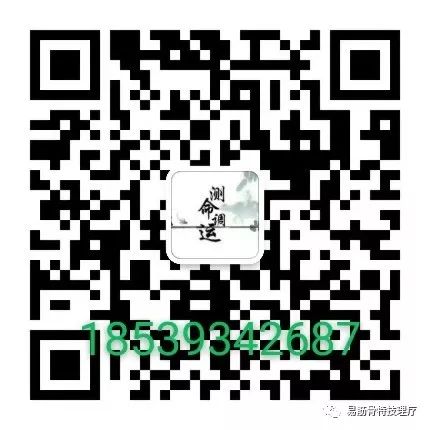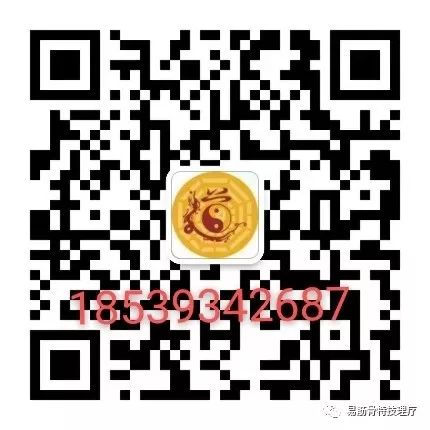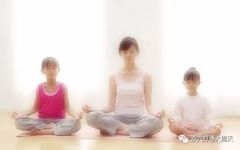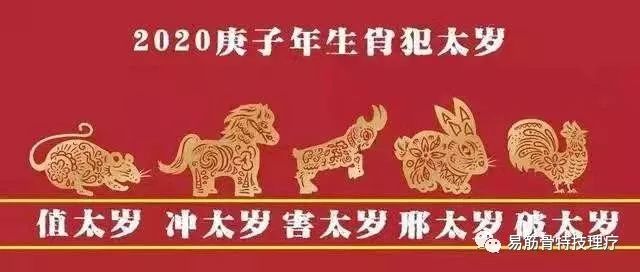
Quick Mastery of Qigong Techniques
Every morning before getting out of bed and every night before sleeping, lie flat on your back. Use your left hand to press the Neiguan (Inner Pass) point on the scrotum, while your right thumb presses the navel. Place your index finger on the back of your middle finger, and use your middle finger to press along the line from the navel to the penis for three minutes, at a speed of one hundred times per minute. Focus your attention, and after three rounds, you should feel warmth in your feet, at which point you can stop.
Note: This practice should not be done for extended periods to avoid straying into improper paths; those who have had surgery in the genital area or have acute conditions such as orchitis or epididymitis should not practice, as the consequences will be at their own risk.
Step-by-Step Guide to Quickly Learn Qigong Practice
When we mention Qigong, several terms come to mind: Dan Tian (Elixir Field), Yi Shou (Mind Guarding), Tongue Touching the Palate, Cross-Legged Sitting, etc. For those unfamiliar with practice, these terms may seem strange, and even some practitioners may struggle to grasp the concept of Yi Shou.
Let’s first look at a simple yet effective Qigong practice.
Lower Dan Tian Practice
Lower Dan Tian Practice: Sit cross-legged, straighten your spine, palms facing up, legs relaxed, gaze forward, eyes gently closed, tongue touching the palate, focus on the Dan Tian, and relax your entire body.
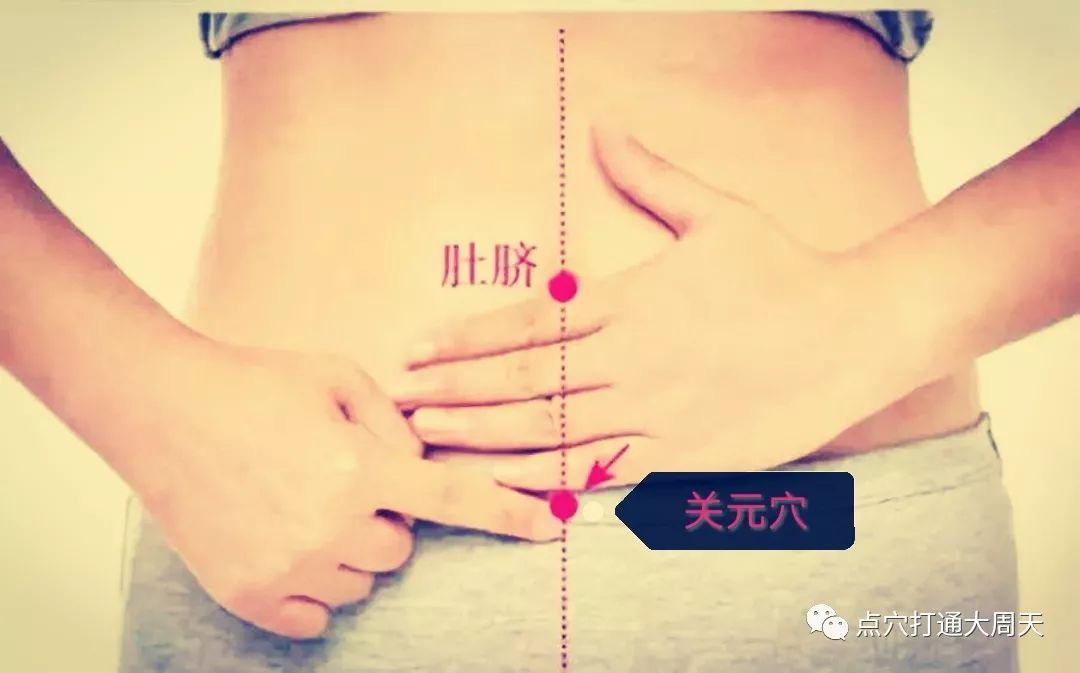
Cross-Legged Sitting
Cross-legged sitting involves crossing your legs together, which shortens the height of the body and shortens the route for Qi to flow back. Additionally, the overlapping acupoints in the legs and hips facilitate the resonance and strengthening of meridian energy. The entire cross-legged posture can also be seen as a large mudra, focusing and directing energy to the Hui Yin (Perineum), aiding in the opening of the Ren (Conception) and Du (Governing) Meridians and the central meridian.
Of course, during practice, if you can sit cross-legged, do so; if not, you can choose to sit with one leg crossed, or if that is not possible, sit upright, or if sitting is not feasible, you can lie down. Forcing yourself into a cross-legged position when unable to do so can lead to muscle strain and impede blood flow, which can lower overall energy and hinder progress in practice.
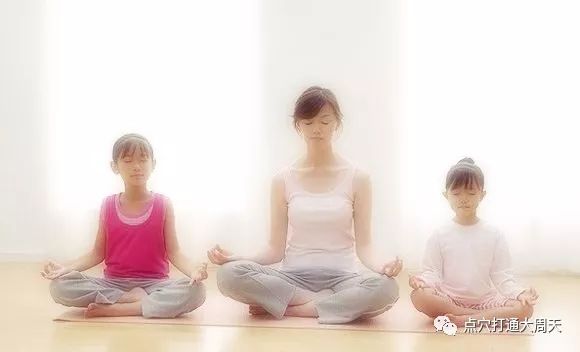
Straighten the Spine
Stretching the muscles is beneficial for health, but many are only familiar with stretching the leg muscles, which helps open the liver, spleen, and kidney meridians. Stretching the spinal muscles, however, aids in opening the Ren and Du Meridians and the central meridian. Conversely, maintaining a hunched posture can easily block the Ren and Du Meridians. Therefore, during practice, strive to keep the spine straight to facilitate the flow of Small Heavenly Circuit.
Palms Facing Up
Palms facing up is one of the most common mudras, capable of mobilizing the energy of the entire meridian system. It also symbolizes the acceptance of heavenly energy. This mudra is simple and easy, making it suitable for beginners.
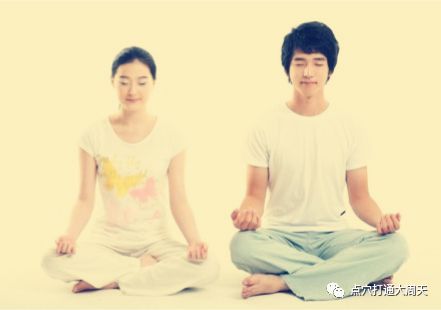
Eyes Gently Closed
Many depictions of Bodhisattvas show them with their eyes gently closed. This state is one of being slightly closed, where the eyelids are lowered, and the gaze is directed towards the nose, and the nose towards the heart. Closing the eyes can prevent external distractions, but closing them too tightly can lead to tension, so a gentle closure is preferable for entering a meditative state.

Tongue Touching the Palate
Tongue touching the palate means the tongue is pressed against the upper palate. Many people may not know where the upper palate is located. We can refer to the following image. The tongue should arch slightly and touch the upper palate, with the tip of the tongue lightly touching the roots of the lower teeth. In Qigong, this is considered a bridge connecting the Ren and Du Meridians, commonly referred to as “building a bridge with a magpie.” 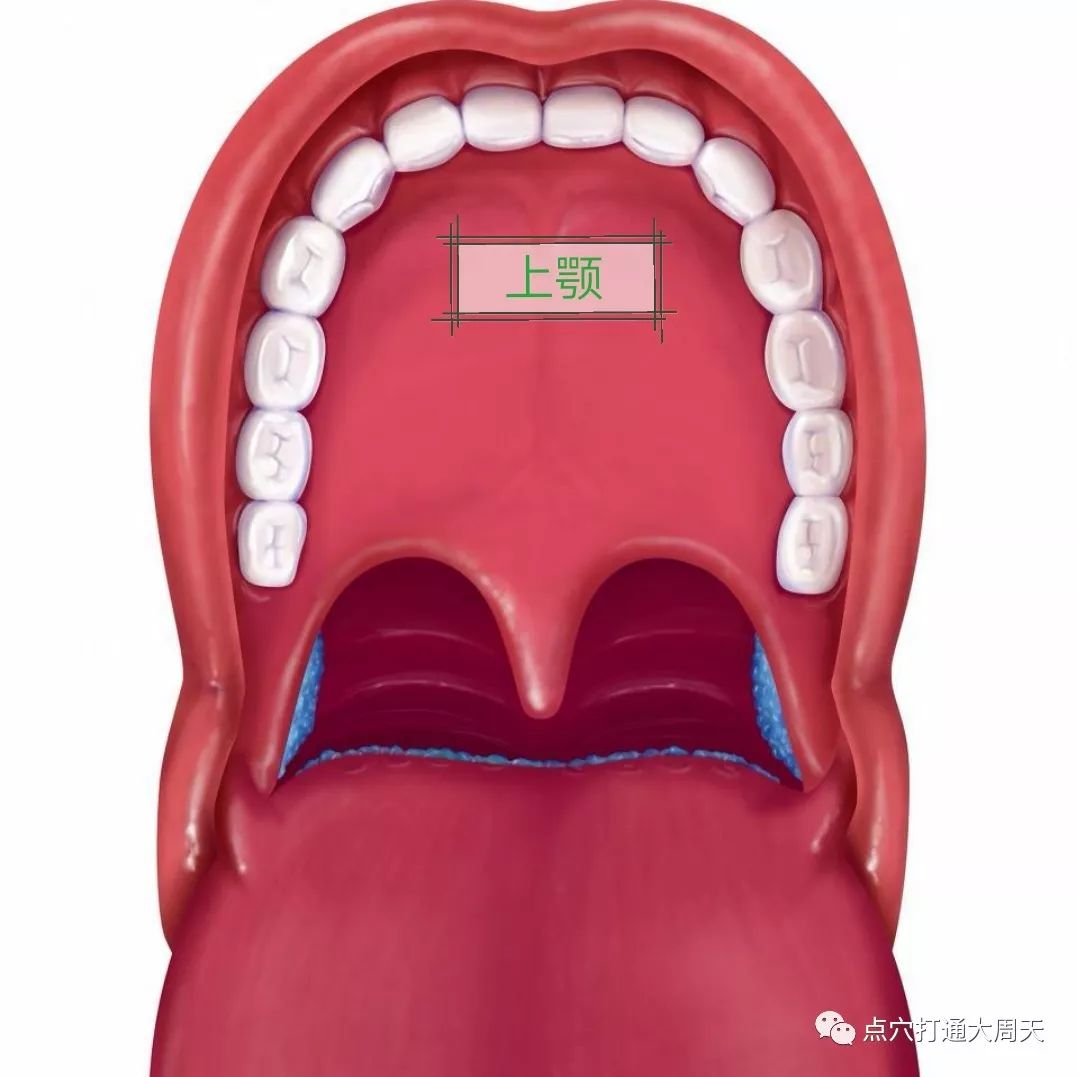 The Ren Zhong (Philtrum), Yin Jiao (Gum Junction), and the upper palate point all help to connect the energy of the Ren and Du Meridians. Generally, pressing or needling these points can have emergency effects for fainting. Practicing Qigong while keeping the tongue in contact with the palate creates a continuous awareness of that point, maintaining communication with the Dan Tian. Additionally, the tongue touching the palate promotes saliva secretion, which is beneficial for practice. Throughout this process, the tongue and oral muscles should remain relaxed.
The Ren Zhong (Philtrum), Yin Jiao (Gum Junction), and the upper palate point all help to connect the energy of the Ren and Du Meridians. Generally, pressing or needling these points can have emergency effects for fainting. Practicing Qigong while keeping the tongue in contact with the palate creates a continuous awareness of that point, maintaining communication with the Dan Tian. Additionally, the tongue touching the palate promotes saliva secretion, which is beneficial for practice. Throughout this process, the tongue and oral muscles should remain relaxed.
Mind Guarding the Dan Tian
To mind guard the Dan Tian, one must first know its location. The human body has three major Dan Tians, located in the head, chest, and abdomen. The midpoint between the eyebrows is the Yin Tang (Hall of Impression), which is the upper Dan Tian; the midpoint between the breasts is the Shan Zhong (Central Palace), which is the middle Dan Tian; and four finger widths below the navel is the Guan Yuan (Origin Pass), which is the lower Dan Tian. The lower Dan Tian can simply be referred to as the Dan Tian, while the upper and middle Dan Tians should not be referred to as such.
So what does mind guarding mean?
Those who struggle to enter practice often do not understand what mind guarding is and fear they are practicing incorrectly.
Observing and feeling a certain area is what is meant by mind guarding.
As long as you focus your mind on a certain area and coordinate with your breathing, you will feel the flow of Qi, which is the essence of Qi guidance.
Simply focusing on the Shan Zhong (Central Palace) can help open the pathway between the throat and the Shan Zhong, effectively treating heart, lung, liver diseases, and various discomforts in the surrounding areas.
Qi has the characteristics of consciousness directionality and blockage point directionality. Consciousness can guide Qi to flow towards the area being observed, and blockage points will automatically guide Qi to flow towards the location of the blockage.
When there are too many blockage points or insufficient Qi, our ability to perceive Qi will inevitably decrease.
As the Qi clears the pathway between the throat and the Shan Zhong, excess Qi will naturally expand towards the stomach and intestines, reaching the perineum. When Qi flows clearly to the perineum with each breath, it indicates that the Ren Meridian has been opened. Once the Ren Meridian is open, there is no need to deliberately guide Qi to the Du Meridian; simply continue to focus on the Shan Zhong while allowing Qi to flow naturally to the perineum and eventually to the Tailbone. Persisting in this will eventually open the Du Meridian.
The spleen and stomach are the foundation of postnatal life and the source of Qi and blood production. Addressing gastrointestinal diseases will lead to a quicker overall improvement in constitution.
In specific situations, you can also focus on other areas to open the meridians. For those with liver Qi stagnation, focusing on the San Yin Jiao (Three Yin Intersection) can help relieve liver Qi stagnation. For those with excessive heat rising, focusing on the Yong Quan (Gushing Spring) can help direct the heat downwards.
Principles of Acupuncture and Qi Guidance
When we experience pain or itching in the body, we instinctively focus on those areas, whether passively or actively. This is a human instinct. By paying attention to those areas, Qi can unconsciously be directed there, allowing the body to self-heal within its immune capacity.
In fact, mind guarding means that even when you are not in pain, you actively focus on a certain area, and Qi is subjectively directed there without needing to be prompted by pain.
Acupuncture is similar to Qigong; the sensations of soreness, numbness, swelling, pain, and heaviness during acupuncture also involve controlling consciousness to guide Qi. The insertion, lifting, thrusting, and twisting at different depths and angles have more dimensional effects than what can be achieved through mere mind guarding.
The essence of acupuncture is = Qi guidance + inducing minimal physical trauma (pseudo-trauma).
The Qi guidance induced by acupuncture means that the consciousness is compelled to focus on the painful acupoint, and even if the acupoint is not painful, the subconscious is constantly monitoring the needle-like foreign object at the acupoint, directing the body’s Qi towards the needled acupoint. Once the acupoint is influenced by Qi, it will transmit meridian energy to the corresponding organs.
The minimal physical trauma caused by acupuncture is negligible to the body, yet this slight trauma can trigger a significant immune response.
Each acupoint in the body corresponds to a complete holographic reflex area, and every surface area of bone can become an independent and complete reflex zone, which can also combine to form a holographic reflex area. When acupuncture is applied to a certain acupoint, all connected holographic areas are instantly activated, and the corresponding organs will also be activated, prompting the immune system to treat these areas as damaged regions for repair.
Therefore, sometimes needling a point for back pain can treat back pain, and needling an unrelated control point can also treat back pain, because the body has holographic areas everywhere, and inadvertently needling an effective area can yield results. For those who have already opened the Small Heavenly Circuit, any acupoint can become effective; they can directly observe the flow of Qi towards the diseased area.
Practitioners with a certain level of skill can enhance the efficacy of acupuncture with their intention.
Understanding the relationship between holography, acupoints, and acupuncture reveals that acupuncture creates a pseudo-injury to deceive the immune system, triggering the body to repair the pseudo-wound while simultaneously directing energy to the reflected organ areas.
This is similar to vaccination, where dead pathogens deceive the immune system into producing antibodies.
The principle of cupping also involves attracting attention to guide Qi, while cupping can alter the blood flow between large blood vessels and cellular tissues, having additional restorative effects.
Generally, practitioners can clearly feel Qi being drawn into the cupped acupoint during cupping.
Understanding the relationship between Qigong and acupuncture naturally leads to the understanding that Qigong can also be a means of healing, albeit through a different approach than acupuncture and herbal medicine.
Acupuncture and herbal medicine transform major illnesses into minor ones and minor illnesses into none, after which it is generally not possible to continue. Few healthy individuals are willing to undergo acupuncture or take medicine without necessity, and most people cannot fully grasp acupuncture and herbal medicine.
However, Qigong is different; there is no need to worry about any side effects.
When Qigong transforms major illnesses into minor ones, and minor ones into none, continuing practice may lead to a smooth Small Heavenly Circuit, and then miracles may occur in a person’s life.
Practice Considerations
The human capacity for consciousness is limited, so good rest leads to concentrated attention, and vitality is enhanced. Poor rest leads to scattered attention, as the body conserves consciousness as a self-protective response. Those who sleep early (during the Hai (Pig) Hour) generally have more abundant Qi.
When pain is too intense, it triggers stronger attention, exceeding tolerance can lead to collapse, such as fainting from pain. The same principle applies to fainting during acupuncture.
Those with insufficient Qi and blood may experience dizziness and nausea when Qi is drawn during acupuncture, leading to symptoms of dizziness and chest tightness.
Some individuals with weak constitutions may feel faint during practice due to excessive mental exertion. It is advisable to first lightly guard the acupoint and gradually increase the intensity of focus as they adapt.
Experiencing sensations of soreness, numbness, swelling, pain, cold, heat, sweetness, or airflow during practice is a normal response. There is no need to fixate on various sensations, as fixation can slow progress.
When the lower meridians are not yet open, focusing on the upper Dan Tian can cause Qi and blood to rise, leading to some illnesses, which can hinder practice.
Generally, if one cannot reach a high level of meditation, they should not imitate the practice methods of the Zi (Rat) Hour. Striving to sleep well before the Zi Hour is more beneficial than anything else.
Avoid practicing during thunderstorms or in environments that may cause fright. It is also permissible to practice Shan Zhong (Central Palace) Qi Guarding during menstruation.
Individuals with mental health issues must have a guardian closely supervising them during practice.
Shan Zhong Qi Guarding
Shan Zhong Qi Guarding: Sit cross-legged, straighten your spine, palms facing up, legs relaxed, gaze forward, eyes gently closed, tongue touching the palate, focus on the Shan Zhong, and relax your entire body.
For beginners, Shan Zhong Qi Guarding can more quickly open the Small Heavenly Circuit compared to the lower Dan Tian practice.
The only difference is that one focuses on the lower Dan Tian, while the other focuses on the middle Dan Tian.
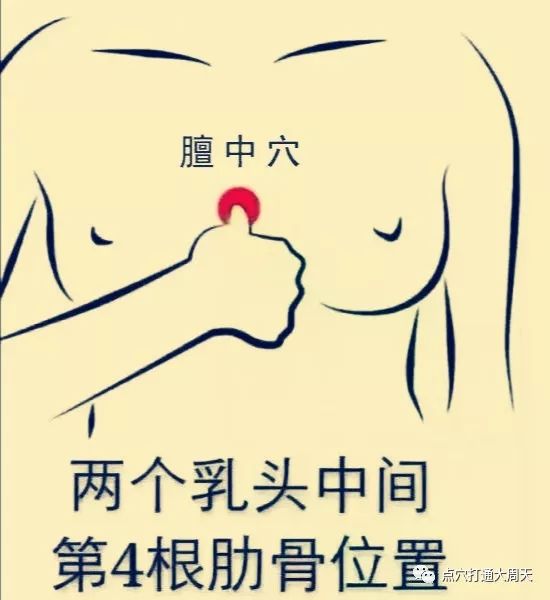
To simplify mind guarding, we can focus on the acupoint while exhaling towards it, without worrying about how to inhale.
What does it mean to exhale towards the acupoint?
It means: although the exhalation actually exits through the mouth and nose, we visualize the Qi flowing from the throat towards the Shan Zhong during exhalation.
The above methods are simple yet effective, and I hope those destined to practice cherish them. To enhance the practice effect, it is recommended to alternate with Ba Duan Jin (Eight Pieces of Brocade).
